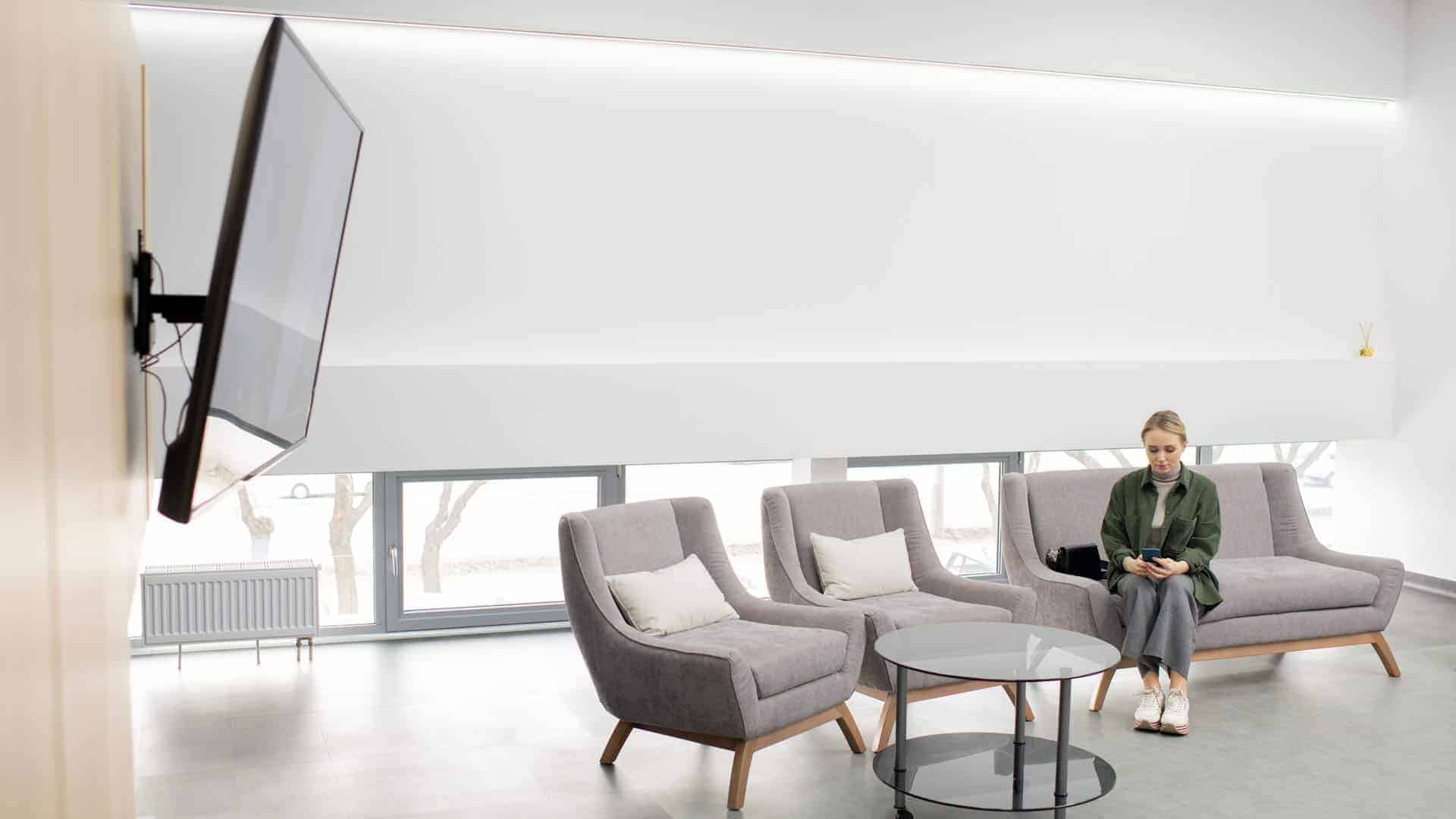You might think you can’t help patients suffering from mental health issues until they sit opposite you for a consultation. Well, the good news is this: the design of your practice can also make a difference. Any anxious patient waiting to be seen in a patently clinical and austere environment is only going to become more anxious.
So here are some ways your practice environment can reflect the calming, reassuring approach you’ll take once face-to-face.
Lighten the mood, naturally
In other words, have windows to the outside world, as many as you can muster. Natural light and sunlight cause the brain to release serotonin, a hormone known to improve mood and help your patients feel relaxed.
Set the tone for calm
The colours of your practice walls and furniture may seem to be merely a design decision, but they’re much more than that: they’re an emotional decision that impacts on the mood in your waiting room and practice as a whole.
The human brain is obviously a complex organ, yet it’s receptive to even the most subtle stimulation, and that includes colour. Greens are known to have subconscious nurturing and healing qualities. Orange tones provide an atmosphere of warmth and energy.
Choose your colours carefully and you can make every consultation a little nicer even if your patients have no idea why.
Create comfortable clutter
Chances are your patients will spend more time in your waiting room than they will in your consulting rooms. So don’t ruin your well-lit, carefully coloured environment with nasty lines of regimented plastic chairs screwed to the floor and an old coffee table stacked with ten year old Woman’s Weekly’s and National Geographic’s.
Update the coffee table and magazines and surround it with a movable mass of comfy chairs. That way parents with kids can create their own little space while they wait, as can anyone who wants to jsit quietly on their own and watch TV. And yes, your waiting room should have a TV with the volume low, but listenable.

Show the way
Back to basics here. Once called, patients need to know exactly where they need to go. And if a doctor hasn’t popped their head out a door, they have no clear path, even in small practices with less than a dozen doors to choose from.
Treat your practice like a series of roads with eye-level directional signage and clear door signage. Repeat directional signage regularly to ensure elderly or anxious people reach the right room easily without staff having to rush to their aid.
Again, the calmer your patients are when they reach their appointment destination, the smoother the appointment will go.
Make patients feel safe
That means making sure they feel that all their health needs will be discussed in privacy – in other words, no thin walls and no open doors. Ensure all consulting areas are adequately soundproofed for maximum patient comfort.
If you really want to go the extra mile in giving your patients a nice experience, provide lockers for personal storage and desks with phone charging ports so they can stay in touch with family or work colleagues.
If you give serious consideration to all these clinic-enhancing suggestions, you’ll go a long way to providing an environment patients will return to without hesitation.
Article originally published by Interite Health Healthcare Interiors. They are Australia’s leaders in medical fit outs and healthcare design. Contact them via website https://www.interitehealthcare.com.au/



